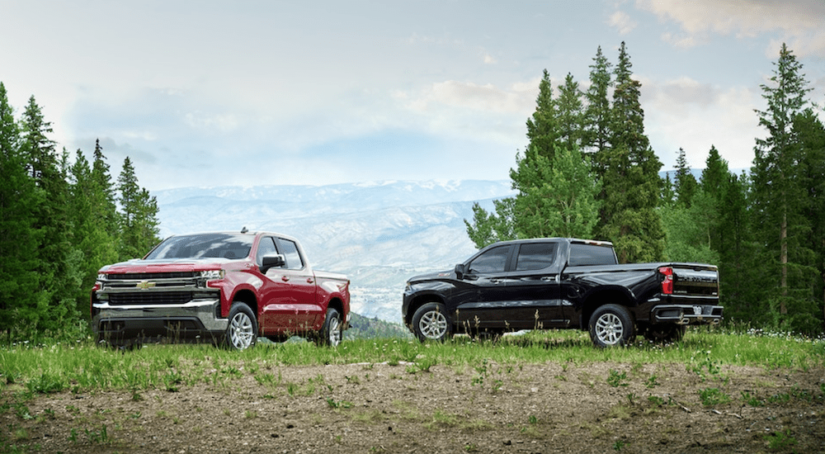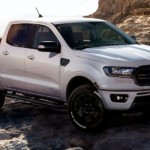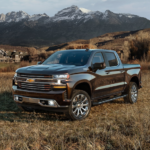Despite an entire childhood spent behind the wheel of various cars and trucks, it would be 1994 before I obtained my driver’s license at age sixteen. As my friends and I began to acquire our first vehicles, be they self-bought or handed down to us, there was a diverse sampling of makes, models and model years. However, of any style of vehicle, trucks were most prevalent (mine was a modest metallic blue ’89 Ford Ranger 4×4 with a 2.9-liter V6, in case you were interested). And it would be a few years before anyone had a truck that wasn’t of Ford, Chevy or Dodge origins. So, if you were to tell my younger self that someday I’d be paid to compare a 2019 Chevy Silverado vs 2019 Honda Ridgeline, I’d think you were crazy. After all, a domestic tentpole being challenged by, of all things, a Honda? Well, that would be downright laughable.
Right?
But over the last quarter of a century, the automotive landscape has undergone a major overhaul. For example, traditional family carriers like the sedan and minivan have been traded for the ever-popular crossover, an alternative which serves as the happy medium between full-size SUVs and versatile off-road wagons. Like some sort of inoffensive end-all / be-all amalgam of the average consumer’s wishlist, the crossover is becoming less an option and more the norm, with entire lineups being scrapped and rebuilt around them.
And while it remains relatively unscathed by those developments, the truck segment has undergone a drastic metamorphosis of its own in the same period of time. By the mid-90’s the team at Toyota were dipping their toe in the proverbial pool with all the reluctance of a poolside toddler with water wings. Fast forward to 2019, and the ‘Big Three’ truck makers have seen their respective pieces of the pie cut up and redistributed time-and-time again, making room for relative upstarts like Toyota, Nissan and (yes) even Honda. Furthermore, those rookies showed up ready to play, and have delivered some genuinely comparable offerings.
So has my mind changed at all, or do I still find the need for comparison between the Silverado and Ridgeline laughable? If pressed for an answer, I’d say the latter would still be accurate, but I’m willing to give it a fair shot…so, that being said, let’s get on with it. Here’s a closer look at the 2019 Chevy Silverado vs 2019 Honda Ridgeline.
The Basics
Having just enjoyed its centennial anniversary, the Chevy Silverado ranks as one of the all-time great mainstays of the automotive industry. And for 2019, the Silverado has been reimagined, leaving it larger, lighter and more powerful than ever before. Starting around $28,300 MSRP the Silverado comes in eight trim choices (Work Truck, Custom, LT, RST, Custom Trail Boss, LT Trail Boss, LTZ, and High Country). This allows for you to opt for a barebones ride that gets the job done, to an enhanced Z71 off-road ready performer, or genuine luxury inspired offerings that are just as capable at completing any task thrown at it.
But if the Silverado’s longevity has made it indistinguishable from the legacy of the American laborer, the Honda Ridgeline has proven slightly more divisive. Priced to start around $29,990 the Ridgeline is served up in six trim levels (RT, Sport, RTL, RTL-L, RTL-E and Black Edition) each increasing the value proposition in terms of amenities, or exploring different facets of the Ridgeline’s unique aesthetic.
That said, we have to acknowledge the early advantage enjoyed by the Silverado for its longevity, proven track record and more universally-appreciable styling. Factor in the more accessible price point, and Chevy’s off to an early lead. (1:0 Chevy)
Performance Ratings
Across the Silverado’s trim levels, the standard rear-wheel drive truck enjoys the option of 4WD capability, with five powertrain configurations allowing one to customize their Silverado experience. This begins with a 4.3-liter EcoTec3 V6 paired with a 6-speed automatic transmission, delivering 285 hp and 305 lb-ft of torque. Next, a 5.3-liter variant that serves up 355 hp and 383 lb-ft, or a 6.2-liter version that wrangles 420 hp and 460 lb-ft of torque. Then, there’s the option of exploring the 5.3-liter with Dynamic Fuel Management, followed by a 2.7-liter Turbo channeling 310 hp and 348 lb-ft. Such a wide array of options help the Silverado to offer something for everyone.
On the other hand, the Ridgeline comes standard with a 3.5-liter V6 paired to a six-speed automatic, serving up 280 hp and 262 lb-ft of torque. But that’s it. In other words, the Honda Ridgeline’s divisiveness if emphasized by their lack of desire to be anything other than what they are. In other words, another win for the Silverado (2:0 Chevy).
Utility Ratings

If you’re buying a truck to get a job done, payload and towing capacities are an important consideration. Properly equipped, the Silverado can tow up to 12,500 LBS. On the other hand, the towing capacity of a well-equipped Ridgeline maxes out at 5,000 LBS. Factor in the Silverado’s max payload of 2,543 LBS versus the Ridgeline’s 1,586 LB max and it’s easy to see which one is built to work.
(3:0 Chevy)
Exterior Design
To address the elephant in the room, I feel it’s necessary to stress the subjective nature of design aesthetics. Beauty truly is in the eye of the beholder and, in the case of this comparison, that consideration has never been more important.
As alluded to above, the Silverado has one of the most classic designs in the segment. But across its respective trim levels, Chevy has shown that they’re not afraid to play fast and loose with the core aesthetic. From grille and bumper design to front-end badging the Silverado’s fascia is served up in a few fresh flavors, but never at the risk of slipping off-brand or endangering the truck’s unique identity. Otherwise, the Silverado feels fairly consistent across trim levels – depending on the cab and bed configuration. Available in either Regular, Double or Crew Cab or with Short (69.92-inch) Standard (79.44-inch) or Long (98.18-inch) there really is a Silverado for everyone.
Since its introduction back in 2005, the Ridgeline represented Honda’s recognition that they needed to do something bold in order to distinguish themselves from competitors. And while they’ve been true to their intent, the Ridgeline has never been everyone’s cup of tea. While unapologetically on-brand, the first impression made by the Ridgeline is that its front fascia is largely indistinguishable from such SUV stablemates as the Pilot. Immediately, there’s a sense of SUV influence overruling truck influence, right down to the modest 63.6-inch bed length. And while this will accommodate some people’s utilitarian needs, the limitations of the Ridgeline are just as divisive as the aesthetic.
That said, we have to give another win to the Silverado. Honda deserves some points for originality, but at what cost? (4:0 Chevy)
Interior Design
Revisiting the idea that design is subjective, we’ll try not to belabor this section. Ultimately, it comes down to whether you prefer the cabin of your truck to look and feel like a truck, or if you prefer the comfort of an SUV-inspired ride. That said, we’ll leave the comparison up to you, to explore, and throw both the Silverado and Ridgeline a point, since both are well designed for their respective goals. (5:1 Chevy)
Final Thoughts
I really tried to keep an open mind on this comparison, but I’m not really surprised at the outcome on this. While there’s nothing wrong with the Ridgeline, it just feels like a pale shadow of a truck when measured up against one of the most iconic trucks ever made. It’s almost an unfair comparison.



